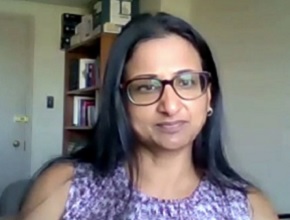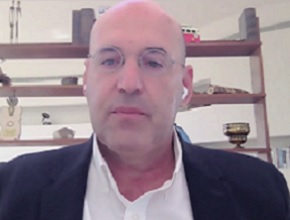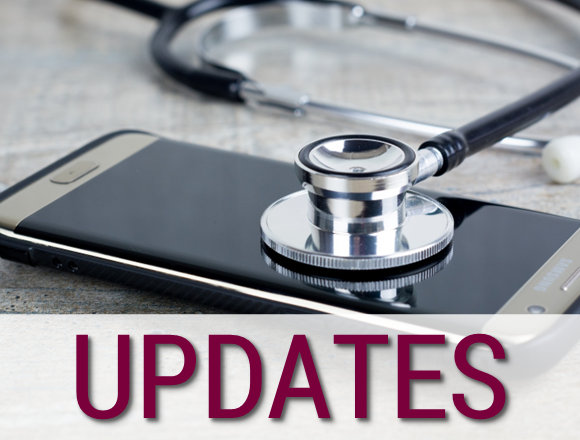Melanie McComb, point-of-care coordinator at Joseph Brant Hospital in Burlington, Ontario, joins Dr Roman Jaeschke to discuss the advancements of point-of-care testing.
Roman Jaeschke, MD, MSc: Good afternoon. Welcome to another edition of McMaster Perspective. I would like to introduce to you Melanie McComb, who is the point-of-care coordinator at Joseph Brant Hospital in Burlington, Ontario. Melanie, maybe we’ll start by asking you to introduce yourself and your job.
Melanie McComb: Thanks very much, Roman. I’m Melanie McComb. I’m the point-of-care coordinator here at Joseph Brant [Hospital] and I have been doing point-of-care [testing] for ~20 years, since point-of-care [testing] was just a baby in the making and we were all trying to get our footing and figure out how we were gonna create these great point-of-care programs and make them very useful and effective throughout our institutions.
I’ve been with the hospital since 1992, so a bit of a long-standing member here in Burlington. [I] started as a medical laboratory technologist (MLT), as a bench tech. Then a new opportunity came to create the point-of-care role and I’ve been attempting to make that the best it can possibly be ever since. Thank you for having me.
Roman Jaeschke: You mentioned 1992. I started even earlier and I remember the time where in order to get, [let’s] say, calcium, I needed to call a biochemist, and in order to get lactate, we needed to take a taxi and go to a different hospital. I still remember the time when the first glucometer came. So, we are talking here about on-site measurement in real time. Which tests is your organization providing at the moment?
Melanie McComb: For critical care, right now, we’re providing blood gases with an expanded menu of electrolytes and metabolites and we’re also doing hemoglobin in our operating rooms (ORs).
Roman Jaeschke: When you mentioned metabolites, what do you mean by that?
Melanie McComb: Specifically, glucose, creatinine, and lactate.
Roman Jaeschke: And lactate... These are the ones that we frequently want to have as fast as possible, obviously. How do you decide which tests could go from, [let’s] call it, the regular lab, with the system of delivering samples to the lab and then waiting for the results and so forth versus point-of-care testing? How do you decide that it’s OK to do [point-of-care testing]?
Melanie McComb: First, we’ll get a submission from the stakeholder[s] to see what exactly it is they’re looking for and in which areas, because, of course, our point-of-care [testing] shouldn’t be in all areas. That’s definitely not cost-effective. And then we’ll assess what the need is, what the turnaround time is, what the cost is versus the type of care that needs to be delivered to the patient at that time. And they’re really good at putting a good case forward and then we’ll take a good look at it. It also depends on who’s going to be providing the funding for that specific testing. Not everything can come out of a laboratory budget, of course. So, sometimes there’s negotiation there on where some of that funding comes from.
As a laboratory we’re... You know, we wanna provide them [with] what they need to give your patients the best care possible, so, we’re pretty good at assessing all of that information and bantering back and forth to see what we can provide and give to them. And the other thing is we really need to have a laboratory method to support point-of-care testing. We can’t do just random testing. We would have a hard time keeping up with all of our accreditation requirements if we were not able to support that testing. So, we would need some on-board methods for the lab as well to put that into place.
Roman Jaeschke: So, you do some validity check, then reproducibility checks, and accuracy checks, and so forth, [am I] correct?
Melanie McComb: Absolutely. Quite an extensive [check].
Roman Jaeschke: Quite extensive. And that’s how you decided to do, if I remember correctly, you obviously said, glucose, which just part of life now, but also hemoglobin with a separate machine, so to speak. And then you have a blood gas analyzer, which also provides you with lactate and [electro]lytes.
Melanie McComb: That’s correct. And we’ve actually gone with a handheld blood gas [analyzer]. There are many types of point-of-care blood gas [analyzers] on the market. There are a few that are handheld and we’ve gone that route.
Roman Jaeschke: So, who is holding it in their hands then?
Melanie McComb: Well, everybody wants to hold it in their hands. However, we’ve decided to limit it to the MLTs, the respiratory therapists (RTs), and, in certain cases, our intensive care (ICU) registered nurses as well.
Roman Jaeschke: The first abbreviation—MLTs?
Melanie McComb: Yeah. Those are [medical] laboratory technologists.
Roman Jaeschke: OK, so, that’s an abbreviation for something from the lab. So, you have an RT taking this and going to do a blood gas [test] somewhere on the floor in the hospital?
Melanie McComb: That’s correct.
Roman Jaeschke: With the results being effectively available within minutes?
Melanie McComb: In minutes via Wi-Fi. As soon as they’ve done the tests, they're available on the patient’s electronic medical record (EMR) for a physician to assess.
Roman Jaeschke: And do they display on the handheld device as well?
Melanie McComb: Absolutely.
Roman Jaeschke: If the clinician is with the patient, the clinician can see it almost instantaneously, [am I] correct?
Melanie McComb: That’s correct.
Roman Jaeschke: So, it’s not only that you have it in the intensive care unit. You deploy it effectively as needed, for people who may need it rapidly.
Melanie McComb: We are currently running it in our emergency rooms (ERs) as well, because our RTs will go down to our emergency department and they will actually use the device for trauma patients as they come in as well.
Roman Jaeschke: Do they bring it with them or the ER has its own device?
Melanie McComb: [The ER] has its own assigned device.
Roman Jaeschke: So, it’s like ultrasound [machines] years ago when we were trying to introduce them, or oximeters, or glucometers, and so forth. Clearly, especially in the case of respiratory failure or sepsis, when the time is of essence, to have such a thing would be very, very useful. I wonder if you could share with us the impression of how the users greeted this opportunity. Did you have resistance? Do you have enthusiasm? Which way does it go?
Melanie McComb: [It] depends on which decade you’re talking about. Initially, when we got our first handhelds, which were back in 1999, it was a little difficult for everybody to understand how it was gonna work. But it was a joint affair between [the] respiratory [therapists] and [the] lab and it went OK. It was a bit of a learning curve, because, again, back in 1999, point-of-care programs were just in their babyhood.
Now we’ve switched. We had the opportunity to make a little bit of a change, because we built a new hospital here in Burlington and we had the opportunity to bring on some different point-of-care [testing] and probably I would recommend anybody who is attempting to do something like that to really, really bring in your other departments into the decision making. At first, there’s resistance: “Oh, well, you know, we don’t really know about those types of analyzers.” But if you bring them into the fold and help, get them make the decision, then the buy-in is so much better, the response is so much better. The relationship for anything you need your end users doing is so much easier if they’ve already bought into the technology and into the program. That’s what we did when we switched over in 2017 and it’s been a really great program with our blood gases.
Roman Jaeschke: What would happen today if you were to say: “OK, we’re going back to the regular work of the lab, we are removing, [let’s] say, the blood gas, lactate, lyte analyzers.” What would be the reaction you think?
Melanie McComb: Well, I would definitely do it on Zoom, I wouldn’t want to do it in person.
Roman Jaeschke: OK [laugh].
Melanie McComb: It would be really tough, really, really tough. Even in 2017, when we did make a change, we attempted to go back to a more lab-type device setting for blood gases and there was resistance at that point as well, because having the convenience—and convenience costs—of being able to run right to the patient bedside and perform your testing there, they just wouldn’t want to ever let that go. And also, the convenience of having your result right there for your patient and the sample quality—taking it right from the patient's bedside, testing it immediately, no delay, no sample clotting, the amount of sample integrity errors definitely diminished—we appreciate that as well.
Roman Jaeschke: I did not realize that. So, it’s not only the cool technology, so to speak, but it’s also useful; [it’s] not only convenient, but it may be as well—if not more—reliable. You know, I believe that with this technology we are approaching the situations where we started with oximeters, glucometers, bedside ultrasounds... And I think [that] point-of-care [testing]—for the speed and reliability, and convenience—is the way of the future, but it’s my own perspective, not necessarily the McMaster perspective. So, I want to thank you very much. And if we get any questions, I will direct them your way.
Melanie McComb: Thank you very much for having me.
Roman Jaeschke: I really appreciate your time. Thank you.
Melanie McComb: Thank you.
 English
English
 Español
Español
 українська
українська











